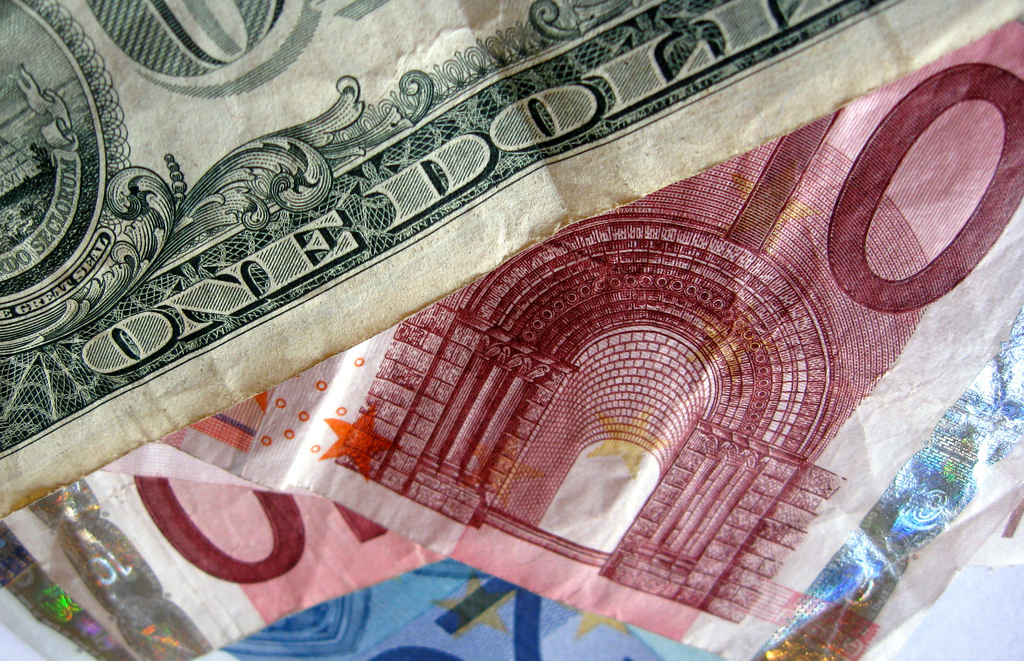Swissquote Bank: Rising inflation translates into currency strength

By Ipek Ozkardeskaya, Senior Analyst, Swissquote Bank
European equity markets gained recently on hopes that Donald Trump might broker a meeting between Vladimir Putin and Volodymyr Zelensky. However, Putin has not yet agreed to dialogue with Kyiv. Regardless, US crude is below a key support level (and falling) this morning on rising hope of progress – a move that could rapidly reverse as Russia looks much less enthusiastic to end the Ukrainian war then Trump is.
Meanwhile, defense stocks came under pressure yesterday after disappointing earnings from Germany’s Rheinmetall—one of the most popular European defense plays this year amid the US’s scaled-back security involvement in Europe and NATO’s pledges to ramp up military spending. A delay in budget approvals by Germany’s new government, along with timing around the NATO summit, reportedly postponed some orders to the second half. But investors weren’t receptive to excuses. Rheinmetall shares fell 8%, slipping to their 100-day moving average. Elsewhere in the sector, Q2 results were mixed: Leonardo raised its forecast, BAE Systems upgraded its sales and EBIT guidance, while Dassault Aviation missed expectations. Overall, the outlook for European defense remains positive—but valuations may have run ahead of fundamentals.
Despite that, the Stoxx 600 closed above its 50-DMA, and even the Swiss SMI rebounded—this, despite Switzerland leaving Washington without a better deal than the current 39% tariffs on its US-bound exports. Gains in European indices remain fragile, however, as these tariffs could weigh on underlying economies. My guess is that central banks will be forced to step in with further support.
The 39% tariffs have increased speculation that the Swiss National Bank (SNB) might resort to negative rates in the second half. Meanwhile, expectations for the European Central Bank (ECB) remain mixed. The ECB will likely hold rates steady at the next meeting but may signal one or two more cuts by year-end depending on data. While inflation in the eurozone remains contained—helped in part by a stronger euro—there’s growing divergence among member states, which could complicate decision-making. Still, I believe the bias will remain dovish enough to avoid further pressure on already strained economies.
Across the Atlantic, the mood was more downbeat. Energy stocks dragged markets lower as oil prices fell—US crude broke below $65/barrel, returning to a medium-term bearish consolidation zone.
Economic data didn’t help: Initial jobless claims rose to their highest level since November 2021, and a New York Fed survey showed rising inflation expectations, largely attributed to the new tariffs. That combination—rising inflation and slowing growth—fits the classic definition of stagflation, which would typically call for central bank caution. But theory doesn’t seem to apply when Trump is rewriting the rulebook.
US futures are trading higher this morning on news that Stephen Miran will replace outgoing Federal reserve (Fed) Governor Adriana Kugler, and that Christopher Waller is being considered as the next Fed Chair. Both men are viewed as dovish, which aligns with Trump’s rate-cut ambitions. However, the US 2-year yield has barely reacted—reminding us (again) that rate cuts don’t always lower borrowing costs if they aren’t seen as credible or justified. Remember last September, when the Fed unexpectedly slashed rates by 50bps? The 2-year yield jumped nearly 30bps over the following two months. For now, markets still expect the next cut to come in September, keeping the S&P 500 near record highs despite trade uncertainty and policy inconsistency.
Several analysts are warning of a potential 10–15% correction, as August, September, and October are seasonally weaker months. Still, most view any dip as a buying opportunity. And when everyone’s waiting to buy the dip, markets often don’t dip much at all—soft selloffs aren’t enough to trigger broad deleveraging. In short: the positive momentum continues, and AI remains a key driver.
In Japan, the Nikkei is up 1.7% this morning, while the tech-heavy Topix surged to a fresh all-time high. SoftBank shares hit a record after the company returned to profitability last quarter. Sony also approached record highs after raising its full-year profit forecast despite tariffs. Toyota, however, fell sharply after reporting a 37% drop in profit due to US tariffs.
All in all, tech continues to be a virtual comfort zone. Valuations are rich, but AI-driven demand remains strong, corporate spending is resilient, and some firms—like Meta—are successfully converting investment into revenue.
In US chip stocks, Trump’s 100% tariffs paradoxically lifted sentiment. The market expects chipmakers that manufacture domestically to benefit from protectionist measures. Nvidia flirted with record highs, while AMD shrugged off its post-earnings dip.
On the FX front, the US dollar remains under pressure from trade volatility, weak Treasury auctions, and dovish Fed expectations, though we’re seeing a modest rebound in Asian trading. The EURUSD is consolidating after a 2% rally since the start of August. Meanwhile, sterling extended gains against both the euro and the dollar after the Bank of England delivered a ‘hawkish rate cut. Four MPC members voted to keep rates unchanged, and with UK inflation expected to hit 4% in the coming months, prospects for a November rate cut have been mostly priced out.
We’ve come full circle: rising inflation is again translating into currency strength, reversing the early-2025 dynamic where dovish central banks were seen as pro-growth. That shift is particularly relevant for the euro, which had previously rallied on hopes the ECB would support growth.
